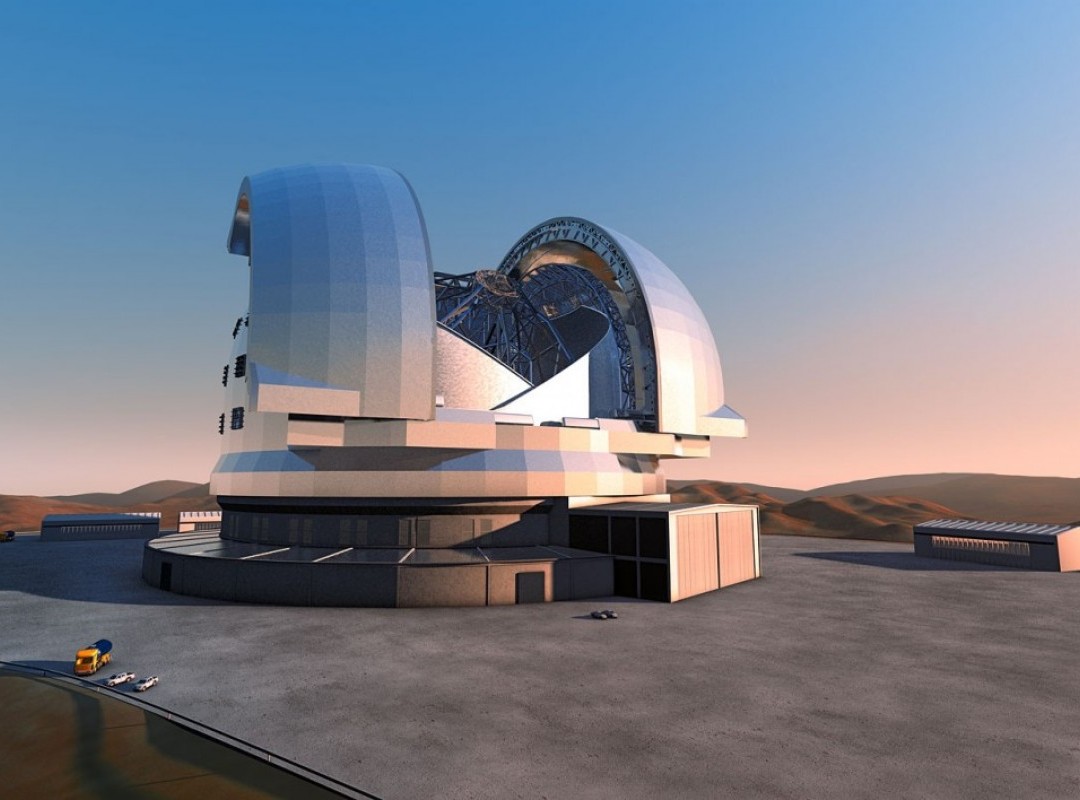znanost
glasba
festivali
festivali
festivali
festivali
Evropski Zelo velik teleskop (The European Extremely Large Telescope)
Astronomy is experiencing a golden era. The past decade alone has brought amazing discoveries that have excited people from all walks of life, from the first planets orbiting other stars to the accelerating Universe, dominated by the still-enigmatic dark matter and dark energy.
Europe is at the forefront of all areas of contemporary astronomy, thanks in particular to the flagship ground-based facilities operated by ESO, the pre-eminent intergovernmental science and technology organisation in astronomy. The challenge is to consolidate and strengthen this position for the future. This will be achieved with a revolutionary new ground-based telescope concept, the European Extremely Large Telescope (E-ELT), with a performance that is orders of magnitude better than currently existing facilities. Such a telescope may, eventually, revolutionise our perception of the Universe, much as Galileo's telescope did, 400 years ago.
The 39-metre European Extremely Large Telescope is currently undergoing a very detailed design phase. The start of E-ELT construction is planned for late 2014, with start of operations planned for early in the next decade.
The telescope's "eye" will be almost half the length of a soccer pitch in diameter and will gather 15 times more light than the largest optical telescopes operating today. The telescope has an innovative five-mirror design that includes advanced adaptive optics to correct for the turbulent atmosphere, giving exceptional image quality. The main mirror will be made up from almost 800 hexagonal segments.
Are We Alone?
The E-ELT is taking astronomy a step further. As a 40-metre-class telescope with the adaptive optics concept built in, the E-ELT will lead to many breakthroughs in the field.
The E-ELT has embraced the quest for extrasolar planets — planets orbiting other stars. This will include not only the discovery of planets down to Earth-like masses through indirect measurements of the wobbling motion of stars perturbed by the planets that orbit them, but also the direct imaging of larger planets and possibly even the characterisation of their atmospheres.
Furthermore, the E-ELT's suite of instruments will allow astronomers to probe the earliest stages of the formation of planetary systems and to detect water and organic molecules in protoplanetary discs around stars in the making. Thus, the E-ELT will answer fundamental questions regarding planet formation and evolution and will bring us one step closer to answering the question: are we alone? Apart from the obvious scientific interest, this would represent a major breakthrough for humanity.
The E-ELT in numbers Main mirror diameter: 39 metres Light collecting area: 978 square metres 39-metre diameter
With its main mirror as large as 39 metres in diameter, this will be the largest telescope to observe in visible-light. It will be four to five times larger than the present-day state-of-the-art facilities of this kind, and will collect about 15 times more light. It will also be much larger than the two other extremely large telescopes in planning, the Thirty-Meter Telescope and the Giant Magellan Telescope.
Almost 800 segmentsIt is not possible to build such a large mirror in one piece. Instead, the 39-metre diameter primary mirror will be composed of 798 hexagonal segments, about 1.4 metre wide and 5 cm thick. The whole concept of the telescope is to be modular, so that pieces can be manufactured in large quantities, thereby drastically reducing the cost. Only this approach makes the E-ELT possible within a restricted budget.





